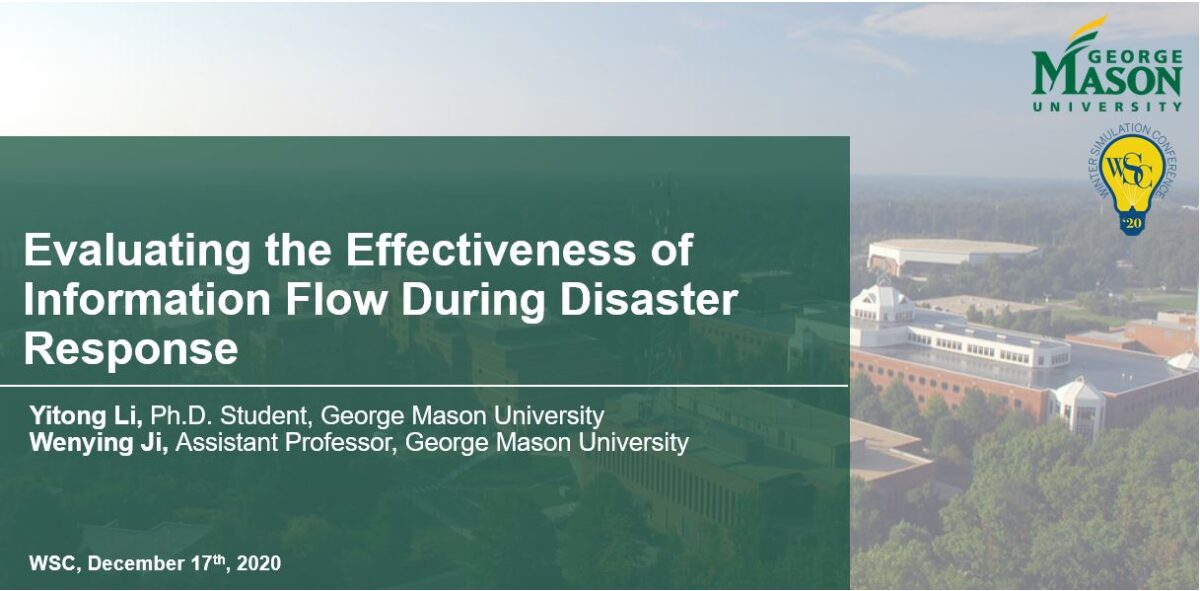
While Wenying Ji, Assistant Professor in the Department of Civil, Environmental, and Infrastructure Engineering at George Mason University, has previously collaborated with Xinghua Gao (Virginia Tech) and Jundong Li (University of Virginia), he saw a new opportunity to take their research deeper through a 4-VA Collaborative Research Grant. Through a 4-VA grant, Ji hoped, he and his fellow researchers could delve into an analysis of stakeholder communications during disaster response, an important addition to his ongoing research integrating advanced data analytics and complex system modeling to improve the performance of infrastructure systems.
Through the 4-VA program, Ji could receive funding from 4-VA@Mason, while his collaborators at Virginia Tech and UVA could also receive modest financial support from their universities through 4-VA. Ji’s hopes came true as the 4-VA@Mason Advisory Board saw the potential in the research; thus, all collaborators obtained support from 4-VA. Ji’s research aimed to model, analyze, and identify effective communication and collaboration patterns that stakeholders utilize in response to disasters.
As Ji explains it, during disaster response, the communication process among agencies is complex due to the involvement of a great number of agencies at different hierarchical levels and sectors–the federal, state, and local level agencies; non-governmental agencies; and private contractors. Ji’s goal was to extract effective communication and collaboration patterns through an analysis of historical disaster response documents and evaluate various possible communication and collaboration patterns that may affect stakeholder response.

Their work began with Gao at Virginia Tech who was able to collect a range of valuable data sources (e.g., situational reports and government-issued guidelines) that document stakeholder interaction processes. The team considered situational reports from natural disasters, including Hurricane Irma in Florida and Hurricane Harvey in Texas, and studied the reports documenting a 10-day period.

That information was sent to Li, who is an expert in graph modeling. From there, the data went to Ji and graduate student Yitong Li. Li performed much of the analysis and gained valuable, practical experience from the research.
The result of their research has produced a quantitative model which evaluates the impact of information flow on the effectiveness of disaster response. Based on the model, a metric was then designed to evaluate the probability of community satisfaction. The designed model and the metric provide governmental stakeholders interpretable insights for evaluating the impact of information flow on their disaster response effectiveness, so that proactive actions can be targeted for enhanced disaster response. The team’s approach promotes inter-organizational collaboration in emergency management by helping stakeholders easily identify effective communication and collaboration patterns.

Following their successful research, the group produced a journal paper entitled “Robustness of Stakeholder Response Networks for Infrastructure System Protection” for the American Society of Civil Engineers Journal of Management in Engineering, a conference paper and a presentation entitled “Understanding the Dynamics of Information Flow During Disaster Response Using Absorbing Markov Chains” were produced for the Winter Simulation Conference.
Next steps for the team? They plan to submit the proposal to the Humans, Disasters, and the Built Environment (HDBE) program, which is an NSF funded grant. “Thanks to this grant, we hope to take our project to the next level,” says Ji.


